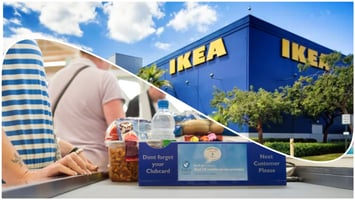The retail industry has undergone a significant transformation with the rise of digital...
Leveraging the Peak-End Rule in Retail Customer Experience

Introduction
The Peak-End Rule (PER) is a concept in behavioural psychology that suggests people judge an experience primarily based on how they felt at its peak (the most intense point) and its end rather than the total sum or average of every moment of the experience.
Understanding the Peak-End Rule
Nobel laureate Daniel Kahneman introduced the peak-end rule, which is a psychological principle that provides valuable insights into how individuals remember experiences, particularly in retail settings. If retailers understand and apply this principle, it can significantly enhance customer satisfaction and loyalty.
In a retail environment, peak moments are those instances that leave a lasting impression on the customer. These moments could range from a staff member's particularly empathetic interaction to unexpectedly swift service at the checkout. These moments are pivotal as they form the most memorable part of the customer's shopping experience.
A customer's final interaction with a retailer disproportionately impacts their overall perception of the experience. Whether it's the checkout process or the final goodbye from the staff, these moments can significantly shape a customer's memory of the entire experience, for better or worse. Therefore, ensuring these moments are positive is important and a strategic imperative for retailers.
Case Study: IKEA's Application of the Peak-End Rule
IKEA, the famous Swedish furniture retailer, has successfully used the Peak-End Rule to enhance its customer experience. By creating memorable moments that encourage repeat visits and positive word-of-mouth, IKEA improves customer satisfaction and drives economic benefits by boosting sales and customer loyalty.
To achieve this, IKEA designs peak moments that resonate emotionally with customers. One example is the layout of its stores, which are meticulously planned to create a journey that guides customers through various room setups, showcasing the furniture and accessories in an aspirational and attainable way. This creates a high point in the shopping experience as customers can envision the products in their homes, creating inspiration and desire.

Another peak moment at IKEA is its marketplace section, located towards the end of the store journey. This section allows customers to pick up smaller items impulsively. The marketplace is filled with affordable and attractive goods that often lead to spontaneous purchases, enhancing the overall shopping experience and creating a robust and positive memory of the visit.
To apply the Peak-End Rule, IKEA has streamlined its checkout process with numerous registers to reduce wait times and improve the flow. The strategically placed bistro offering Swedish treats is a pleasant conclusion to the shopping experience, allowing customers to leave with a satisfying final impression, often enhanced by an iconic €1 ice cream or cinnamon bun. IKEA understands that the final touchpoint, the checkout, is as crucial as the initial impression.
Strategies to Maximise the Peak-End Rule
Training employees to implement the Peak-End Rule can consistently create positive customer interactions. Each touchpoint should leave a strong, positive impression, encouraging repeat visits.
Wrap Up
The Peak-End Rule is a strategy that focuses on creating memorable moments during customer interactions. This approach can significantly improve customer satisfaction and loyalty. IKEA has successfully implemented this approach, creating peak moments and ensuring a positive end to the shopping experience, resulting in increased customer satisfaction and loyalty.
By thoughtfully designing an experience that leaves a lasting positive impression, IKEA sets itself apart from competitors and fosters brand loyalty. This approach demonstrates that retailers must focus on more than just selling products; they must invest in creating an exceptional customer experience.
Implementing the Peak-End Rule requires a strategic approach and investment in staff training, but the potential rewards in customer loyalty and increased sales are significant. Retailers who embrace this rule can gain a competitive edge.




